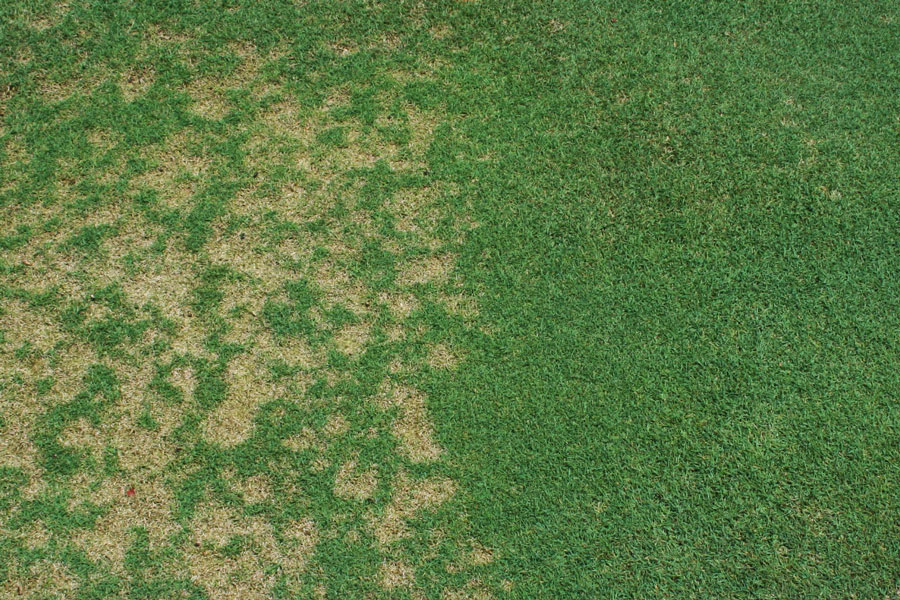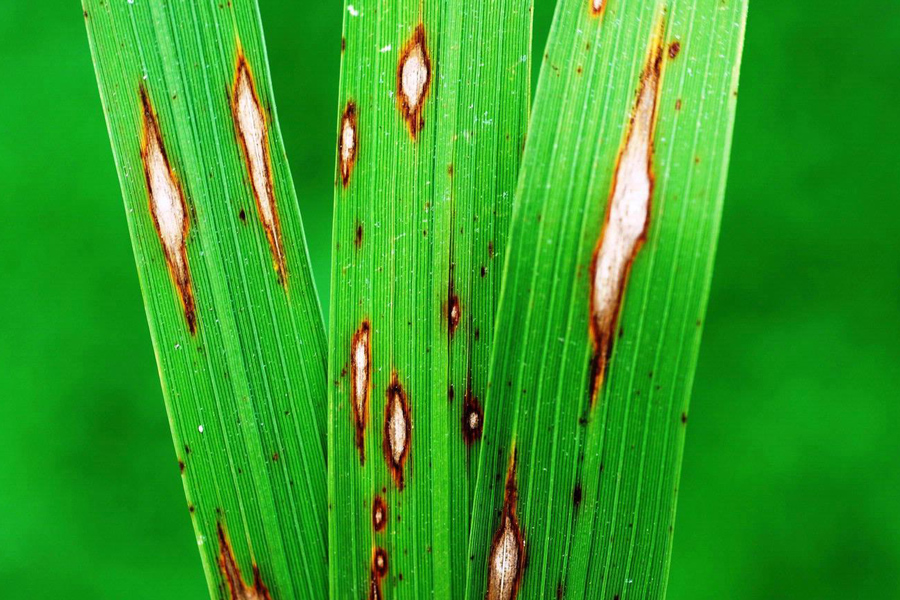Field Crops, Forage and Turfgrass Production
-

A handy reference for the causal agents, susceptible turfgrasses, conditions promoting disease, symptoms, and control of: brown patch, dollar spot, Pythium, Helminthosporium leaf spot, fading out, gray leaf spot, fairy ring, take-all root rot, rust, slime mold, and nematodes.
Alfredo Martinez
|
-

Agente causal, céspedes susceptibles,condiciones que promueven la enfermedad, síntomas y control de mancha parda, mancha dólar, quemazón por Pythium, mancha foliar por Helminthosporium, marchitamiento por Curvularia, mancha foliar gris, anillo de hada, enfermedad toma-todo o pudrición radicular por Gaeumannomyces, roya, hongos gelatinosos y nematodos.
Alfredo Martinez and Leon Lee Burpee
|
-

Take-all root rot (TARR) has emerged as a destructive disease in central, south and coastal Georgia. TARR affects all warm-season turfgrasses in Georgia, but it is more common and severe in St. Augustinegrass (Stenotaphrum secundatum).
This publication contains important information on the biology of the causal agent, detailed descriptions of the disease symptoms (aided by high-quality, detailed pictures), relevant up-to-date information on conditions favoring the disease, and cultural, genetic and chemical methods of control. This publication is intended for turfgrass professionals, consultants, county faculty, homeowners, and general public.
Jake Price, Elizabeth L. Little, Alfredo Martinez, and Donald M. Gardner
|
-

El mal del pie es una enfermedad destrcutiva en la region central, sur y costera de Georgia. EL mal del pie afecta todos los cespedes de clima calido en Georgia pero es mas severo en el cesped San Agustin (Stenotaphrum secundatum). La publicacion contiene informacion importante en la biologia del gente causal, descripcion detallada de los sintomas de la enfermedad (con fotografias de alta definicion), informacion relevante y reciente en las condiciones que favorecen la enfermedad, asi como los metodos de control cultural, genetico y quimico. Esta publicacion es dirigida a profesionales, consultores, agentes de extension y publico en general
Alfredo Martinez
|
-

Stripe rust is an emerging disease in the state of Georgia. Evidence of increased aggressiveness of the disease has been reported recently. Rusts are the most economically important group of wheat diseases. More than $5 billion is lost to cereal rusts worldwide each year.
James W. Buck, Alfredo Martinez, and John D. Youmans
|
-

C 1003
Centipedegrass Decline
Centipedegrass is ideal for the homeowner who wants a lawn that needs little care. It can be established by either seed or vegetative parts and does not require much fertilizer. Compared to other lawn grasses, it is moderately resistant to insects and diseases. Although centipedegrass is a relatively low maintenance grass, proper management is still required.
Clint Waltz and Alfredo Martinez
|
-

Dollar spot is an ever-present turfgrass disease that affects all warm and cool season grasses in the state of Georgia. The publication contains important information on the biology of the causal agent, detail description of the disease symptoms (aided by high quality-detailed pictures), relevant up-to-date information on conditions favoring the disease, as well as cultural, genetic and chemical methods of control. The publication is intended for turfgrass professionals, consultants, county faculty, homeowners and general public.
Alfredo Martinez, Elizabeth L. Little, Kim Toal, and Brian Vermeer
|
-

In the state of Georgia, gray leaf spot primarily affects St. Augustinegrass and is particularly chronic and damaging in the coastal area of the state. This publication contains important information on the biology of the causal agent, detailed descriptions and photos of the disease symptoms, information on conditions favoring the disease, as well as cultural, genetic, and chemical methods of control. The publication is intended for turfgrass professionals, consultants, county faculty, homeowners, and the general public.
Jake Price, Elizabeth L. Little, Alfredo Martinez, and Donald M. Gardner
|
-

Mancha dólar es una enfermedad omnipresent en cespedes de clima calido y frio en el estado de Georgia. La publicacion contiene informacion importante en la biologia del gente causal, descripcion detallada de los sintomas de la enfermedad (con fotografias de alta definicion), informacion relevante y reciente en las condiciones que favorecen la enfermedad, asi como los metodos de control cultural, genetico y quimico. Esta publicacion es dirigida a profesionales, consultores, agentes de extension y publico en general.
Alfredo Martinez
|